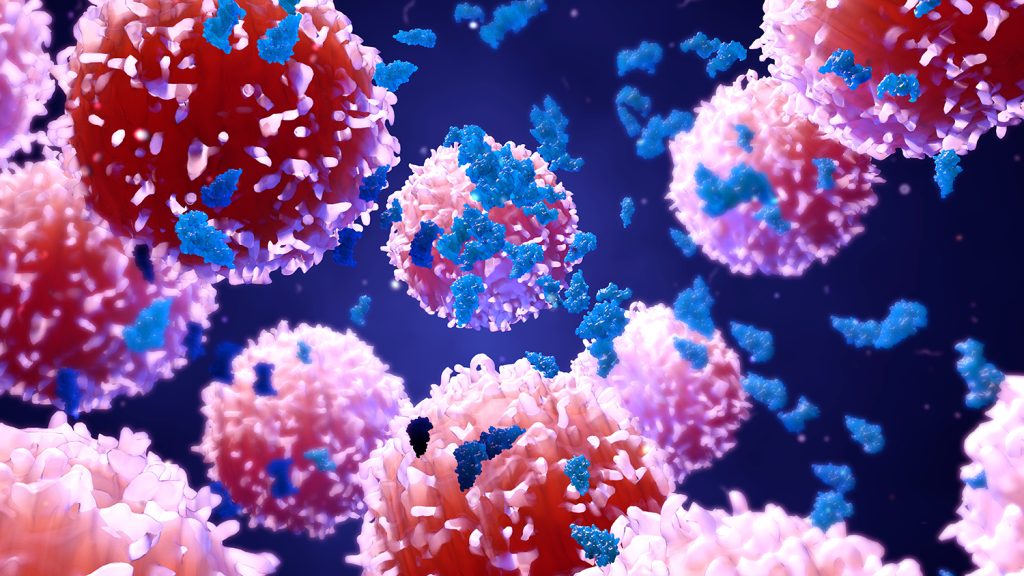
The enzymes used in cleaning formulations are all bacterial in origin. The enzyme companies have huge bio-reactors (often called fermenters) where they grow bacteria that produce the desired enzyme(s). Fermentation starts with a vial of dried or frozen microorganisms called a production strain. The production strain is selected to produce large amounts of the enzyme(s) of interest. Through multiple fermentation steps, where the microorganisms are kept at optimal pH, temperature, and nutrient conditions, so the desired amount of enzyme is produced. When the main fermentation is complete, the mixture of cells, nutrients, and enzymes, referred to as the broth, is ready for filtration and purification.
The recovery step follows fermentation. The recovery process typically consists of a pretreatment followed by a primary separation of the enzyme from the biomass. Afterwards, the enzyme is concentrated by removal of water and then unwanted impurities are removed in a purification step. Following recovery is a formulation or standardization step. Although much effort focuses on finding the right enzyme molecules for a given application, formulation plays a big role in the final use and success of the enzyme product. A new enzyme molecule with excellent performance can fail in the market if the enzyme is not stable during transportation and storage. The right formulation can remove these shortcomings and the importance of having the right formulation cannot be underestimated.
As stated in the introductory enzyme page, all enzymes are proteins. As such enzymes are capable of triggering allergic reactions in some people. Enzymes can also act as sensitizers. To avoid these problems enzymes are typically provided as dust free granulates or as liquid solutions. Granulated enzymes are produced using a unique combination of high-shear granulation and various coating technologies. This results in an effective encapsulation of the enzyme, which isolates it from the environment until the moment the detergent product is dissolved into the washing solution. In addition to ensuring optimal stability of the enzyme while being stored within the detergent, the granulate form also prevents undesired exposure. Liquid enzyme products are easier to handle but must be stabilized by incorporating polyols, sugars and/or salts. In the case of both granulated and liquid enzyme products, the enzyme must be capable of withstanding the detergent matrix for at least the target shelf life of the detergent without significant loss of performance.
Selecting the proper enzyme product depends not only the intended use conditions, but also on the type of enzyme needed. As stated in the introductory enzyme page there are three main types of enzymes used in cleaning applications, protease, lipase, and amylase. Additionally, there are many subcategories of each major class of enzyme and each subcategory performs optimally under slightly different conditions. As such the enzyme suppliers typically blend several different enzymes to make an enzyme product, thereby ensuring acceptable performance under the wide variety of use conditions encountered. There are also several other classes of enzyme which are used in cleaning formulations to a lesser degree.
Proteases accelerate the breakdown of proteins into peptides and soluble amino acids. Proteases are basic ingredients in many cleaning products and are used worldwide because of their effectiveness on common stain components, such as food, grass, and blood. Some proteases have an affinity for specific protein soils; thus, the target stain will determine which protease should be added to a detergent formulation.
Amylases accelerate the breakdown of starch-based stains from foods such as such as cereals, gravy, potato and pasta dishes. Amylases promote complete removal of starch at low wash temperatures. Starch is a long-chained carbohydrate consisting of glucose molecules bound together by alpha-1,4-glycosidic bonds. During wash, certain amylases catalyze the hydrolysis of alpha-1,4- bonds in starch, leading to the decomposition of starch into soluble dextrins and oligosaccharides. Unlike starch, dextrins and oligosaccharides are readily soluble in water and are therefore easier to remove from the surface.
Lipases accelerate the breakdown of triacyl glycerols (lipids) into fatty acids and glycerol. Lipases promote the removal of body stains, animal fats, and vegetable oils from fabric surfaces. Fatty material trapped inside cotton fibers can give rise to visible discoloration on fabrics and these visible spots cannot be removed effectively at medium-to-low washing temperatures without use of a lipase enzyme.
Cellulases are used specifically in laundry detergents to improve the appearance of washed fabric. Repeated washing and wearing damages cotton fibers, resulting in areas with bristly cellulose microfibrils (“fuzz”) that eventually form pills. These microfibrils trap particulate soil, preventing white fabrics from staying white and making colored fabrics look dull. Cellulases cleave microfibrils and pills thereby releasing any trapped particulate soil and helping maintain the brightness of colors on cotton fibers. Cellulases also aid primary stain removal by modifying the surface of cellulosic fibers and fabrics, making it easier for stains to be removed.
Mannanases break down mannans, an adhesive material found in guar gum and locust bean gum. Mannans or galactomannans are polysaccharides consisting of a mannose backbone linked together by β-1,4-linkages with side-chains of galactose attached to the backbone by α-1,6 linkages. Mannanases cleave the β-1,4-linkages of mannans, thus breaking down the gum polymer into smaller, more water-soluble carbohydrate fragments that can be easily removed from the surface being cleaned.
Pectinases degrade pectin, a complex polysaccharides that contains 1,4-linked α-D-galactosyl uronic acid residues contained in the primary cell walls of terrestrial plants. Pectinases catalyze the eliminative cleavage of (1-4)-α-D-galacturonan to give oligosaccharides with 4-deoxy-α-D-galact-4-enuronosyl groups at their non-reducing ends. This means that pectinases cleave the pectin into smaller, more water-soluble fragments that can easily be removed from the surface being cleaned. Pectinases provide unique stain removal benefits on a wide range of pectin-based stains from fresh fruits such as tomatoes, oranges, bananas, and berries, and from various processed foods containing extracted pectin such as tomato sauces, jams, jellies, and low-fat dairy products.
Enzymes are a sustainable solution to many cleaning problems. A relatively small amount of enzyme can have a significant impact on the overall cleaning performance of a detergent formulation. Moreover, enzymes require relatively mild conditions for optimal performance, thus the use of moderate pH conditions and cooler temperatures is favored. Years of testing has proven that enzymes have a very safe toxicological profile. Enzymes are not mutagenic and not clastogenic. They are not reproductive or developmental toxins and have a low toxicity to aquatic systems.
